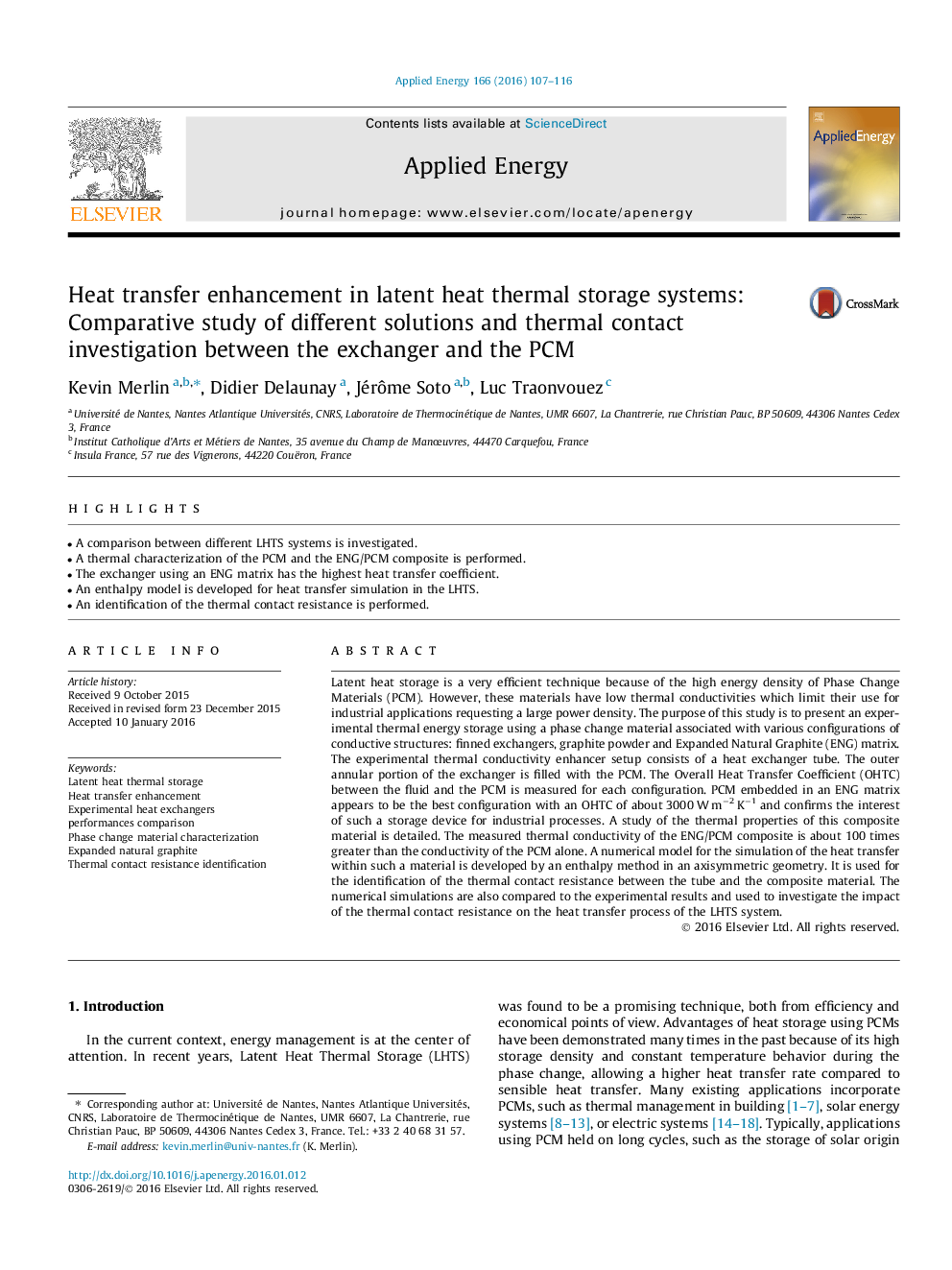| Article ID | Journal | Published Year | Pages | File Type |
|---|---|---|---|---|
| 6683835 | Applied Energy | 2016 | 10 Pages |
Abstract
Latent heat storage is a very efficient technique because of the high energy density of Phase Change Materials (PCM). However, these materials have low thermal conductivities which limit their use for industrial applications requesting a large power density. The purpose of this study is to present an experimental thermal energy storage using a phase change material associated with various configurations of conductive structures: finned exchangers, graphite powder and Expanded Natural Graphite (ENG) matrix. The experimental thermal conductivity enhancer setup consists of a heat exchanger tube. The outer annular portion of the exchanger is filled with the PCM. The Overall Heat Transfer Coefficient (OHTC) between the fluid and the PCM is measured for each configuration. PCM embedded in an ENG matrix appears to be the best configuration with an OHTC of about 3000Â WÂ mâ2Â Kâ1 and confirms the interest of such a storage device for industrial processes. A study of the thermal properties of this composite material is detailed. The measured thermal conductivity of the ENG/PCM composite is about 100 times greater than the conductivity of the PCM alone. A numerical model for the simulation of the heat transfer within such a material is developed by an enthalpy method in an axisymmetric geometry. It is used for the identification of the thermal contact resistance between the tube and the composite material. The numerical simulations are also compared to the experimental results and used to investigate the impact of the thermal contact resistance on the heat transfer process of the LHTS system.
Related Topics
Physical Sciences and Engineering
Energy
Energy Engineering and Power Technology
Authors
Kevin Merlin, Didier Delaunay, Jérôme Soto, Luc Traonvouez,
